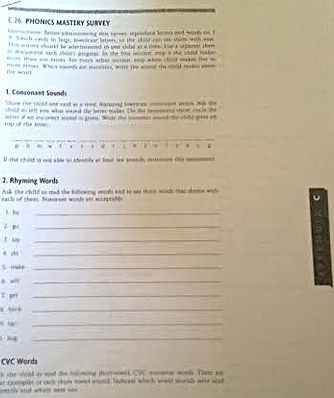
MEDCI

READING

Phonics
What:
Phonics is the relationship between the letters (graphemes) of written language and the individual sounds (phonemes) of spoken language.
Who:
Phonics assessments are usually designed specifically for grades k-3, but can be used for all grade levels (struggling readers).
Why:
Most phonics assessments assess 8 areas: Consonant sounds, rhyming words, CVC pattern–nonsense words, consonant blends, consonant digraphs, long vowel sounds, other vowel sounds, and syllables.
When:
Use as needed when the student is identified with strugglng with any of the above mentioned areas.
How:
-
Obtain a phonics assessment that addresses each of the aforementioned areas.
-
Mark all items either correct or incorrect as the student responds.
-
Write all students gestures, comments, etc. throughout the test as well.
-
Only give the first 10 items of each category (If 5 are missed consecutively within a category, suspend the testing of that category).
-
Interpret - use the percentages to determine strengths and weaknesses.